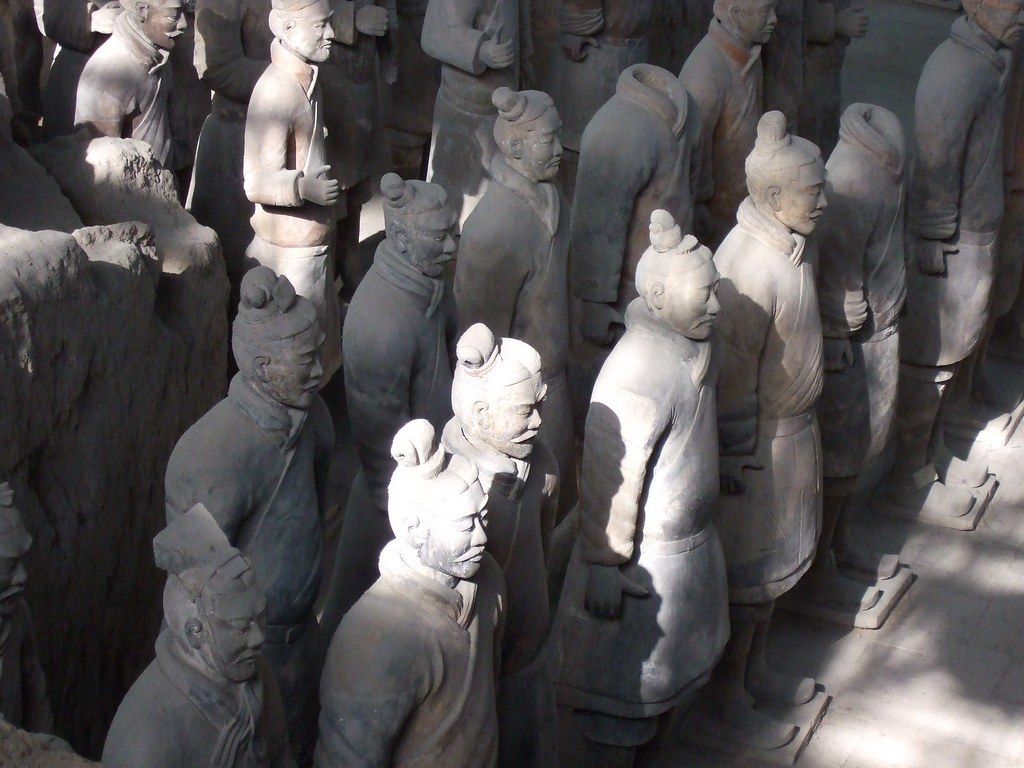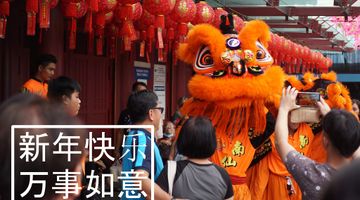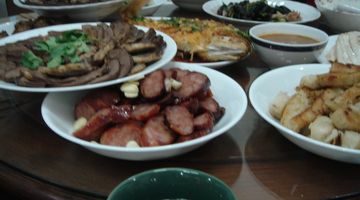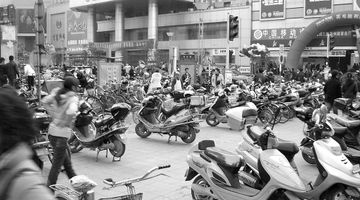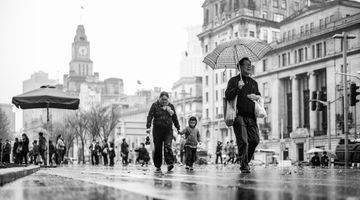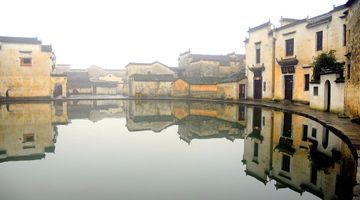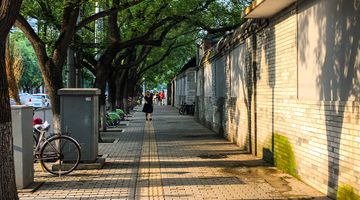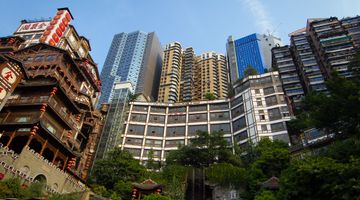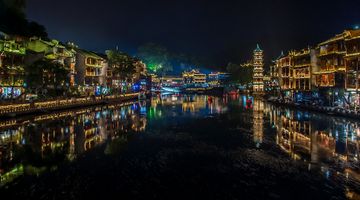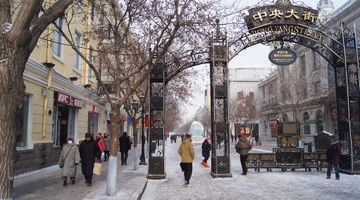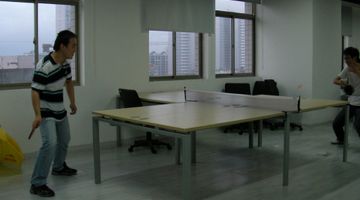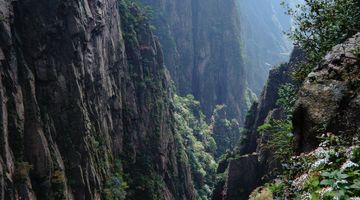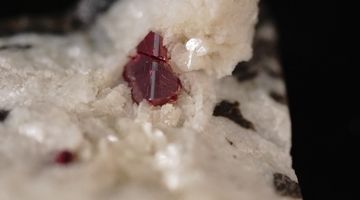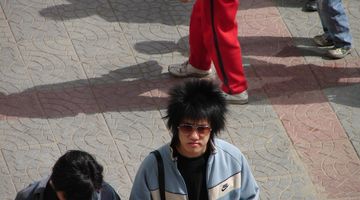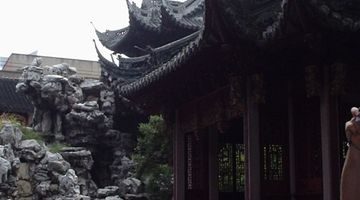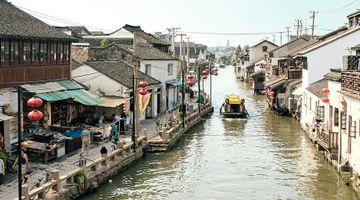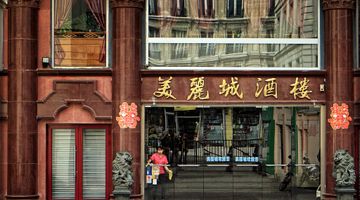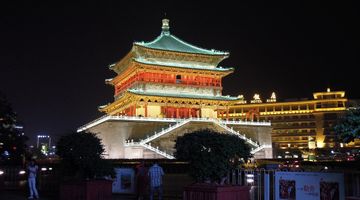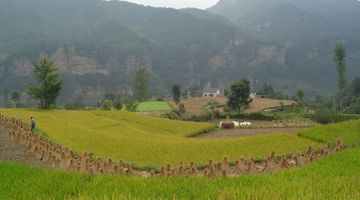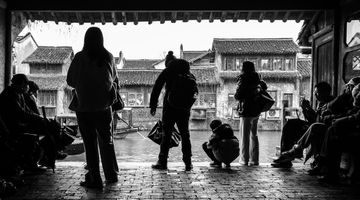Xian China – Top-10 Tourist Attractions
There are several must see attractions in the ancient city of Xi’an, the oldest of China’s Four Great Ancient Capitals and the starting point for traders to head west along the Silk Road. Here, in this article you can discover the top ten tourist attractions among the places to visit in Xi’an the provincial capital of Shaanxi province.
1. Terracotta Army
Since it was discovered by local farmers in 1974 this attraction has helped transform Xi’an into a major tourist destination. The huge army of 7000 life sized soldiers, chariots and horses in battle formation were part of the symbolic guard for the tomb of Emperor Qin Shi Huang, the first Emperor of the Qin dynasty. To visit this attraction from Xi’an you can take tourist bus line 5 (306) from the East Square of the Railway Station. The bus costs CNY7 and takes about one hour. A taxi will cost you about CNY150. Entry to the site costs CNY150 or just CNY120 from December until February.
2. Xi’an City Wall
The city wall that surrounds the ancient city is the most complete city wall that exists today in China. It is also one of the ancient world’s largest military defensive systems. A wall has been in existence here since the Tang dynasty of 618-907, when Zhu Yuanzhang captured Huizhou (as the city was called at that time) he was instructed to enlarge the wall to fortify and protect his city while unifying other states.
Once these extensions were completed the wall stood (as it does today) at 12 metres high, 12-14 metres wide at the top and 15-18 metres wide at the base. It is 13.7 km in length and surrounded by a deep moat. Every 120 metres of the wall has a rampart, with 98 ramparts extending out from the wall to defend against enemy intrusion. The soldiers based in the ramparts could protect the wall while not being exposed to their enemies trying to scale the wall. Each rampart is within range of an arrow so no section of the wall was out of range.
There are four gates built into the wall, each was a complicated structure to make an enemy struggle to gain entry this way. The South Gate, close to the Bell Tower is the best decorated of the gates with two museums inside the barbican and archery tower open to the public.
Entry to the city wall is CNY54, the south gate is open from 8am until midnight, and the other gates close at 7pm (6pm in the off season). It is recommended to allow about 3-4 hours for a visit to the wall.
3. Xi’an Bell Tower
The Bell Tower marks the geographical centre of the ancient city and sits mid way between each of the four gates in the city wall. The wooden tower is the largest and best preserved to be found in China. It is 36m high and stands on a brick base that is almost 9m high. The Bell Tower was first built in 1384 to warn people in the surrounding countryside of an attack from a rival state. On the second floor there is a plaque that records the tower being relocated in 1582. It originally stood close to the Drum Tower but as the city extended it was relocated almost 1000m to its present site. Apart from the base all the tower is original. The Jingyun Bell was originally housed in the northwest corner of the tower but fell silent during the Ming dynasty so a newer smaller bell was cast. The original bell is now on display in the Forest of Stone Steles Museum.
To get to the Bell Tower you can take Metro line 2 to the Bell Tower Station, numerous bus routes pass the site including tourist buses 7 and 8. Entry costs CNY35, although a joint ticket to the Drum Tower costs CNY50. It opens at 8.30am and closes at 9pm (6pm from late October until late March).
4. Xi’an Muslim Quarter
The Muslim Quarter is the main hub of the Muslim community living in the city. It is to the north of West Street and covers several blocks that contain 10 mosques including the Great Mosque. One of the features of the area is the Beiyuanmen Muslim Market; it is about 500 metres long and features several restaurants and souvenirs. To reach the street you should take the archway beneath the Drum Tower. The street is modeled on the styles of the Ming and Qing dynasties.
There are several bus routes that serve the Muslim Quarter although the easiest way might be to use Metro line 2 to the Zhonglou (Bell Tower) station, use exit B and walk for about 5 minutes until you see the Drum Tower, the street is located behind the Tower. The stores and restaurants are generally open from 8am until about 11pm.
5. Big Wild Goose Pagoda
The Big Wild Goose Pagoda is located about 4km south of the city centre of Xi’an. It is a holy place for Buddhists and is part of the Da Ci’en Temple Complex. The pagoda was originally built in the year 652 to house relics collected by Xuanzang during his travels to India and other states. The transcripts he collected were translated into Chinese and he wrote a book ‘Pilgrimage to the West.’
The pagoda was originally 60m high consisting of 5 storeys; it is now 64.5m high with an additional 2 storey’s added later. You can climb up the twisting stairway for a view over the city. On the walls are engravings of Buddha completed during the Tang dynasty.
The Da Ci’en Temple was built in 648, it contains a statue to Xuanzang, and it contains a bell tower and a drum tower, the hall of Mahavira, the sermon hall, the wild goose pagoda and the hall of Xuanzang Sanzang. To visit the Wild Goose Pagoda you can take metro line 3 to Dayanta station or line 2 to Xiaozhai station and it is then a ten minute walk eastwards. It costs about CNY30 by taxi from the railway station. The entry fee for the temple area is CNY50 and it is open daily from 8am until 5pm.
6. The Great Mosque
The Great Mosque is one of the largest, oldest and best preserved Islamic mosques to be found in China, it is located in the northwest of Xi’an on Huajue Lane,close to the Drum Tower. Historical records engraved inside the mosque state it was built in the year 742 once Islam was introduced into China’s northwest by Persian and Afghani traders settling in the area and marrying local Han Chinese women. It is worth visiting the mosque, both for its historical value and the mix of architecture combining Chinese culture with traditional Islamic styles.
The mosque is divided into 4 courtyards and measures 250m long by 47m wide. The courtyards are laid out with gardens and lead to the prayer hall that can contain over 1000 people as they attend services five times each day. The mosque is open for tours when there are no services and costs CNY25, it is open daily from 8am until 7pm, and you should allow 1-2 hours for a tour.
7. Shaanxi History Museum
This museum is located on Xiaozhai East Road just to the northwest of the Big Wild Goose Pagoda. It opened in 1991 and has 370,000 exhibits showing over a million years of history from prehistoric times.
On the first floor in the Number 1 Exhibition Hall you will find relics dating from over I million years ago through to the Western Zhou and Qin dynasties with the timeline of the second century BC. The Number 2 Exhibition Hall shows the cultural exchanges that took place during the Han dynasty as well as the grand architecture of this period of history. The Northern and Southern dynasties cover a period of almost continual war and cultural integration.
In the Number 3 Exhibition Hall you can discover the history and importance of the Tang dynasty in Shaanxi province. The relics on show should help to explain the emergence of trading of gold, silver and pottery along the Silk Road. Once the Tang dynasty ended, Xi’an lost its position as the Chinese capital.
You can take metro lines 2 or 3 to Xiaozhai station and walk east along East Xiaozhai Road for about 800m to reach the museum entrance. Alternatively take line 3 to Dayanta station which is also an 800m walk along the same road but in a westerly direction. There are 6000 free tickets issued each day, 3000 each in the morning and afternoon, you will need your passport to be issued a ticket. It is open from 8.30am until 6pm (9am-5.30pm mid November until mid March). The museum is closed on Monday’s. Some temporary exhibits charge a fee for entry, you should check with the museum directly as to what is being exhibited during your visit and what the charges are.
8. Famen Temple
The Famen Temple is most famous for housing the veritable finger bone of the Buddha Sakyamuni. The temple is located 120 km to the east of Xi’an and has been in existence for over 1700 years. The temple cultural scenic area consists of the Temple Gate Square, Foguang Avenue, Famen Temple and the Namaste Dagoba. It is considered to be Shaanxi province’s second most important cultural area behind the Terracotta Army.
There are four gates between the Temple Gate Square and Foguang Avenue, each of these gates has an importance in Buddhist symbolism. Foguang Avenue is over 1.2km long and 108m wide. The eastern section is known as the ‘Famous Site of Buddha’ while the western one is the ‘Source of Buddhist Realm.’ This leads you to the Famen Temple itself, it was originally known as the Asoka Temple when it was built sometime during the Sui dynasty of 581-618. The most famous structures within the temple are the Famen Temple Pagoda and the Famen Temple Museum. The Pagoda is 13 tiers high and during excavation work to stop it sinking in 1981 an underground palace was unearthed. It is to date the largest underground Buddhist palace to have been discovered and was full of treasures and jewelry. The nearby museum was built in 1987 to house the treasures discovered in the underground palace. It has since then been expanded from 500sq.m to over 3000.
The Namaste Dagoba was completed in 2009 and is 148metres high. It was built to house the finger bone relic of Sakyamuni and is only displayed on the 1st and 15th days of the lunar month in addition to weekends for devotees to come and pay homage.
There are several tourist buses that depart each day from Xi’an the cost is CNY20. Entry costs CNY120 from March until November, the rest of the year it is CNY90. From March until November it is open from 8.30am until 7pm, the rest of the year 9am until 6pm.
9. Drum Tower
The Drum Tower in Xian is just to the northwest of the Bell Tower. They are both located on the Bell and Drum Tower Square. In ancient times the drums were used to signal time and the bell was used to signal alarm such as an attack. It was built in 1380 and no iron nails were used in its construction. Visitors can go to the second floor exhibition of drums and enjoy the views. There are 24 drums on the north and south sides of the tower; they are an ancient form of weather calendar used in agricultural production. The present drum on display is the biggest drum in China. To get to the tower take metro line 2 to the Zhonglou (Bell Tower) station and walk westwards for about 5 minutes. Entry costs CNY35, or you can buy a joint ticket for both towers for CNY50.
10. Huaqing Palace
Huaqing Palace is 30km to the east of Xi’an and is famous for the love story of the Emperor Xuanzong and his concubine Yang Yuhuan during the Tang dynasty. A palace was first built on the site between 1046-771BC by King You, later dynasties added to it. Emperor Xuanzong spent vast amounts creating a luxurious palace complete with hot springs. There were five pools that remain today. The palace is where the Dowager Empress Cixi took shelter from Beijing during the Boxer Rebellion in 1900, it was also where Chiang Kai-shek took temporary residence during the Xi’an Incident in 1936 and he was forced to unite the Chinese against the invading Japanese.
To get to the palace you can take tourist bus 5 directly there, it takes about an hour. Admission to the palace costs CNY150 (CNY120 from December until February). It is open daily from 7am until 7pm (7.30am-6pm from December until February).
Conclusion
It is best to avoid Xi’an in the summer when the temperature reaches 40C; it is also the busiest time for tourists. The winter is cold, often -10C in January. The best time to visit is during March until May when the spring weather is the most pleasant and warm. September and October are also good but with a chance of some rain.

